#deipnon de hekate
Explore tagged Tumblr posts
Text

Deipna Hekates
Al anochecer, la luna pasará de un estado menguante a la total oscuridad: luna nueva.
En la antigüedad griega, la luna nueva marcaba el último día de un mes, consagrado a la diosa triple Hécate. Durante ese día, se hacían distintos rituales y ofrendas para la diosa. A ella se le representa con tres rostros o cabezas. Esto es porque cuando nació, Zeus sintió una gran admiración por ella y le confirió poder en la tierra, el cielo y el mar.
Le están consagradas muchas cosas; protege a quienes hacen brujería y brinda protección a los viajeros, pues sus antochas iluminan los caminos. Hécate misma es la personificación de los caminos. Tiene poder en el Inframundo, igual que Hades y su consorte Perséfone, por lo que también regula el curso de la vida y tiene influjo en los procesos propios de la muerte.
Hécate, como diosa que habita el abismo y reina en el mundo de los muertos, es uno de los aspectos de una diosa primordial llamada genéricamente Diosa Madre o Gran Diosa.

Durante la luna nueva, los griegos hacían rituales de purificación y expiación de culpas: se trataba del Deipna Hekates. Como los perros estaban bajo su protección y consagrados a ella, se sacrificaba uno y con la sangre y los pedazos se hacían ofrendas que se dejaban en los caminos. Los participantes de los rituales debían tocar al animal para que sus culpas pasaran a él y pudieran comenzar el mes libres de impurezas espirituales.
En las entradas de las casas se disponían comidas para ofrendarla; los manjares serían devorados por los pobres, pero su esencia la tomarían las almas cuyas muertes no fueron vengadas. Hécate se hace acompañar de ellas para recoger y admirar las ofrendas.
Aunque la idea de una diosa ancestral venida del Inframundo puede parecer terrorífica, los griegos de la antigüedad reconocían la existencia de un equilibrio sostenido por las fuerzas tanto cnóticas (del inframundo) como celestiales, y la doble naturaleza de la humanidad y sus dioses.
En algunas tradiciones wiccanas, como en la Wicca anglosajona, el tiempo que transcurre entre la luna que comienza a menguar hasta la luna llena, es el ideal para la magia de destrucción. Por el contrario, la magia para la construcción se realiza entre el primer indicio de luna creciente hasta la luna llena.
Una forma de celebrar el Deipna Hekates en la actualidad es hacer una donación de comida, en alusión a cómo las personas desfavorecidas comían las ofrendas de los pórticos. También, se puede montar un altar en alguna intersección o camino. Se puede hacer una limpieza del hogar para librarlo de impurezas y pedir perdón o terminar algo que se ha dejado inconcluso.

www.tarotdeana.tumblr.com
Última imagen: "Hécate", por William Blake.
Lee mitos griegos aquí.
Lee mitos coreanos aquí.
Lee mitos japoneses aquí.
#tarot#cartomancia#tarot reading#ocultismo#ocultista#tarot cards#witchcraft#brujería#artes ocultas#cosas de brujas#triple diosa#gran diosa#diosa blanca#gran madre#diosa madre#hecate#hekates#deipna hekates#deipnon de hekate#wicca#wiccan#pagan#pagano#paganismo#paganism#brujas#bruja#luna nueva#new moon#moon
5 notes
·
View notes
Text
My calendar, translated to our modern calendar for ease.
January:
• Not included. Started my translation in February.
February:
• 1st - Imbolc
• 3rd-6rd - Lenaia
• 11th - Libation to Aphrodite
• 14th - Valentine’s Day
• 18th - Theogamia
• 20th - Hekate’s Deipnon
• 21st - Noumenia
• 22nd - Agathos Daimon
• 23rd - Veles and Lucifer’s Day of Worship
• 24th - Aphrodite, Hermes, Loki, and Freyja’s Day of Worship
• 25th - Dionysus and Prince Seere’s Day of Worship
• 26th - Ares’ Day of Worship
• 27th - Apollon’s Day of Worship
• 28th - Melinoe and Hades’ Day of Worship
March:
• 1st - Zeus, Hera, and Egeria’s Day of Worship
• 3rd-5th - Anthestaria
• 11th - Libation to Hephaistos
• 15th - Diasia
• 17th - St. Patrick’s Day
• 21st - Ostara
• 22nd - Hekate’s Deipnon
• 23rd - Noumenia
• 24th - Agathos Daimon
• 25th - Veles and Lucifer’s Day of Worship
• 26th - Aphrodite, Hermes, Loki, and Freyja’s Day of Worship
• 27th - Dionysus and Prince Seere’s Day of Worship
• 28th - Ares’ Day of Worship / Elaphebolia
• 29th - Apollon’s Day of Worship
• 30th - Melinoe and Hades’ Day of Worship / Asklepia
• 31st - Zeus, Hera, and Egeria’s Day of Worship
April:
• 1st-8th - Dionysia ta Astika
• 8th - Pandia / Libation to Artemis
• 9th - Easter
• 20th - Hekate’s Deipnon
• 21st - Noumenia
• 22nd - Agathos Daimon / Earth Day
• 23rd - Veles and Lucifer’s Day of Worship
• 24th - Aphrodite, Hermes, Loki, and Freyja’s Day of Worship
• 25th - Dionysus and Prince Seere’s Day of Worship
• 26th - Ares’ Day of Worship / Delphinia
• 27th - Apollon’s Day of Worship
• 28th - Melinoe and Hades’ Day of Worship
• 29th - Zeus, Hera, and Egeria’s Day of Worship
May:
• 1st - Beltane
• 5th - Cinco de Mayo
• 6th - Mounykhia
• 9th - Olympeia
• 13th - Libation to Apollon
• 20th - Hekate’s Deipnon
• 21st - Noumenia
• 22nd - Agathos Daimon
• 23rd - Veles and Lucifer’s Day of Worship
• 24th - Aphrodite, Hermes, Loki, and Freyja’s Day of Worship
• 25th - Dionysus and Prince Seere’s Day of Worship
• 26th - Ares’ Day of Worship / Thargelia
• 27th - Apollon’s Day of Worship / Thargelia
• 28th - Melinoe and Hades’ Day of Worship
• 29th - Zeus, Hera, and Egeria’s Day of Worship
June:
• 8th - Bendideia
• 10th - Libation to Zeus
• 14th - Kallynteria
• 15th - Plynteria
• 18th - Hekate’s Deipnon
• 19th - Noumenia
• 20th - Agathos Daimon
• 21st - Veles and Lucifer’s Day of Worship / Arrephobia / Litha
• 22nd - Aphrodite, Hermes, Loki, and Freyja’s Day of Worship
• 23rd - Dionysus and Prince Seere’s Day of Worship
• 24th - Ares’ Day of Worship
• 25th - Apollon’s Day of Worship
• 26th - Melinoe and Hades’ Day of Worship
• 27th - Zeus, Hera, and Egeria’s Day of Worship
• 30th - Skira
July:
• 2nd - Bouphonia and Dipoleia
• 4th - Independence Day
• 8th - Libation to Athena
• 18th - Hekate’s Deipnon
• 19th - Noumenia
• 20th - Agathos Daimon
• 21st - Veles and Lucifer’s Day of Worship
• 22nd - Aphrodite, Hermes, Loki, and Freyja’s Day of Worship
• 23rd - Dionysus and Prince Seere’s Day of Worship
• 24th - Ares’ Day of Worship
• 25th - Apollon’s Day of Worship
• 26th - Melinoe and Hades’ Day of Worship
• 27th - Zeus, Hera, and Egeria’s Day of Worship
• 30th - Kronia
August:
• 1st - Lammas
• 2nd-3rd - Synoikia
• 10th-17th - Panathenaia ta Megala
• 12th - Libation to Hermes
• 17th - Hekate’s Deipnon
• 18th - Noumenia
• 19th - Agathos Daimon / Herakleia
• 20th - Veles and Lucifer’s Day of Worship
• 21st - Aphrodite, Hermes, Loki, and Freyja’s Day of Worship
• 22nd - Dionysus and Prince Seere’s Day of Worship
• 23rd - Ares’ Day of Worship
• 24th - Apollon’s Day of Worship
• 25th - Melinoe and Hades’ Day of Worship
• 26th - Zeus, Hera, and Egeria’s Day of Worship
September:
• 1st-4th - Eleusinia
• 2nd - Other Major Gods’ Day of Worship
• 6th - Hera Telkhinia
• 9th - Demeter and Persephone’s Day of Worship
• 11th - Zeus Epoptes
• 15th - Hekate’s Deipnon
• 16th - Noumenia
• 17th - Agathos Daimon / Niketeria
• 18th - Veles and Lucifer’s Day of Worship
• 19th - Aphrodite, Hermes, Loki, and Freyja’s Day of Worship
• 20th - Dionysus and Prince Seere’s Day of Worship / Genesios
• 21st-22nd - Mabon
• 21st - Ares’ Day of Worship / Artemis Agrotera
• 22nd - Apollon’s Day of Worship
• 23rd - Melinoe and Hades’ Day of Worship
• 24th - Zeus, Hera, and Egeria’s Day of Worship
• 27th - Demokratia
October:
• 2nd - Epidauria
• 7th - Libation to Hades
• 9th - Feast for Native Ancestors (Indigenous Peoples’ Day)
• 12th - Spirits (Nymphs, Spirits of the Home, etc.) Day of Worship
• 14th - Libation to Poseidon
• 15th - Hekate’s Deipnon
• 16th - Noumenia
• 17th - Agathos Daimon
• 18th - Veles and Lucifer’s Day of Worship
• 19th - Aphrodite, Hermes, Loki, and Freyja’s Day of Worship
• 20th - Dionysus and Prince Seere’s Day of Worship
• 21st - Ares’ Day of Worship / Proerosia
• 22nd - Apollon’s Day of Worship / Oskophoria / Pyanepsia
• 23rd - Melinoe and Hades’ Day of Worship / Theseia
• 24th - Zeus, Hera, and Egeria’s Day of Worship
• 26th-28th - Thesmophoria
• 31st - Halloween
• 31st-2nd - Día De Los Muertos
November:
• 31st-2nd - Día De Los Muertos
• 11th - Libation to Ares
• 14th - Hekate’s Deipnon / Khalkeia
• 15th - Noumenia
• 16th - Agathos Daimon
• 17th - Veles and Lucifer’s Day of Worship
• 18th - Aphrodite, Hermes, Loki, and Freyja’s Day of Worship
• 19th - Dionysus and Prince Seere’s Day of Worship
• 20th - Ares’ Day of Worship
• 21st - Apollon’s Day of Worship
• 22nd - Melinoe and Hades’ Day of Worship
• 23rd - Zeus, Hera, and Egeria’s Day of Worship / Thanksgiving
• 24th - Pompaia
December:
• 9th - Libation to Dionysus
• 13th - Hekate’s Deipnon
• 14th - Noumenia
• 15th - Agathos Daimon
• 16th - Veles and Lucifer’s Day of Worship
• 17th - Aphrodite, Hermes, Loki, and Freyja’s Day of Worship
• 18th - Dionysus and Prince Seere’s Day of Worship / Plerosia
• 19th - Ares’ Day of Worship
• 20th - Apollon’s Day of Worship
• 21st-22nd - Heliogenna
• 21st - Melinoe and Hades’ Worship / Poseidea / Yule
• 22nd - Zeus, Hera, and Egeria’s Day of Worship
• 23rd - Rural Dionysia
• 24th - Christmas Eve / Feast of the Seven Fishes
• 25th - Christmas
18 notes
·
View notes
Text
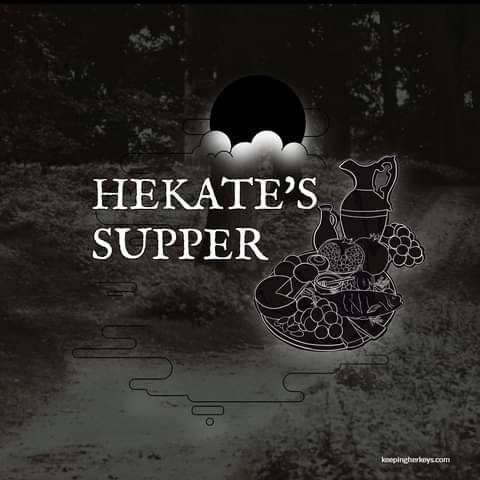
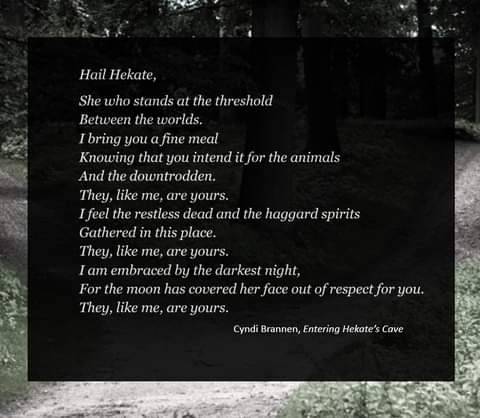
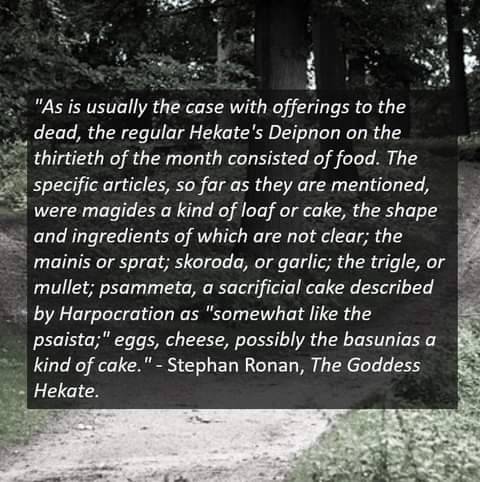
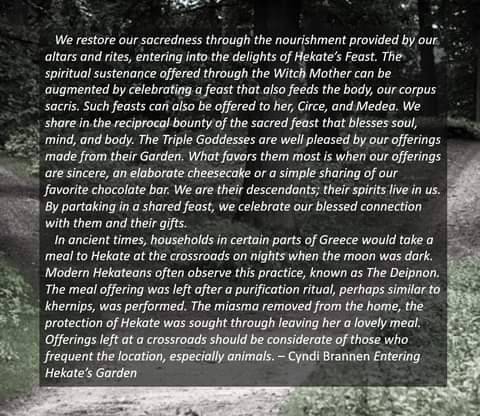


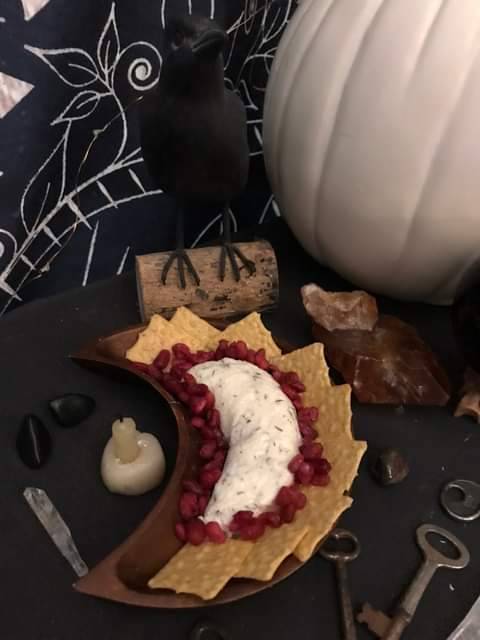
The Dark Moon, occurring on the astrological new moon, is a time for honoring Hekate. Inspired by the ancient practice of leaving meals for her at the crossroads during this time, I love to express my devotion by creating components of the meal based on ancient recipes. I'm working with executive chef, Christen Bennett, who is also a Key Bearer in Covina, on a long-term project researching both the practice and the recipes that were likely part of this meal, which we often refer to as "The Deipnon," which means supper (or feast, which I personally prefer).
Use the link below to access our conversations on the project to date, both on the KHK YouTube and podcast. We're working our way through all the components of the ancient meal. So far we've done cakes, fish, and eggs.
We're currently making cheese for the next Dark Moon, based on a recipe from Columella's De Re Rustica (pictured), which we'll discuss in our live class this coming Monday (July 17; use link in bio to join Covina).
The Dark Goddess Cheesecake from Entering Hekate's Garden is inspired by the ancient ones that were probably part of the meal.
A simpler cheese offering is the Thumon Moon from EHG as well.
Learn more about Covina by following the links below, where there are many more resources in a private community.
https://linktr.ee/cyndibrannen
Entering Hekate's Garden is published by Red Wheel / Weiser Books
#hekate #keepingherkeys #Deipnon #hekatessupper #enteringhekatesgarde
2 notes
·
View notes
Text
Deipnon: δεῖπνον, deîpnon
Es la famosa "cena de hekate", donde sus devotos le ofrecen una comida, poniéndola en cruces de caminos (hoy en dia seria las perpendiculares de las calles). El objetivo de esta noche era purificar el hogar, prepáralo para un nuevo mes, tener la protección de Hecate y que no te mueras, y si lo haces, irte de manera pacífica. Esa es la explicación simple y corta ¿pero de dónde viene?
La mención más vieja viene de "Plutus" 410 de Aristophanes (594):
"Pregúntale a Hecate si es mejor ser rico o hambriento; ella te dirá que los ricos le ofrecen una comida cada mes, y los pobres la hacen desaparecer antes de que sea servida"
Apolodoro, citado en Athenaios, "Los sabios del banquete" (libro 7, capítulo 126)
"(...) (Deipnon), era dado a Hecate el treinta de cada mes"
Aunque en " El calendario sagrado y civil del año ateniense" por Jon D. Mikalson aclara que probablemente funcionaba más como un dia estatal para dejar ofrendas, no como un festival. Aunque también dice "no hay evidencia indisputable que de la naturaleza de este día sobrevive". Esto nos deja que no podemos concluir históricamente nada sobre esa práctica, pudo haber sido un día festivo, o solo un dia para hacer acordar a la gente de dar ofrendas.
Hay gente que soporta la existencia del Deipnon como celebración con Moralia (709) de Plutarch
"Ahora, supongo que la primera obligación del que es invitado e invita a otros es ser cauteloso en no invitar a demasiados. Él no tiene que conseguir provisiones de todos sobre él, como si fueran una milicia viviendo del territorio enemigo, tampoco, como un jugador aprovechando plazas en un juego de pettoi, siempre apretando a los hombres del anfitrión o sacándolos de abordo. Esto pondría al anfitrión en la posición de gente poniendo comida a Hekate y los espíritus hostiles: nunca saboreando la comida por sí mismo, y su casa teniendo nada mas que compartir, pero humo y tumulto."
En "Muertos sin descanso" de Sarah Iles Johnston", ella habla de la opción de que estas ofrendas sean hechas por una razón del momento, no como una celebración. No es una celebración que aparece en los calendario originales, como Noumenia, sino solo se hacen si sucede algo relacionado a la muerte y son llevados por las personas involucradas directamente.
Jon D. Mikalson en "Noumenia y Epimenia en Atenas", comenta que el día anterior a Noumenia, se trataba de terminar cualquier cosa pendiente de ese mes, pagar facturas, limpiar, terminar procesos esencialmente. Estas son cosas que hoy en día se hacen en Deipnon.
Lo que sabemos es que uno de los símbolos más conectados con la diosa Hecate es la luna nueva, es lógico hacer esta luna un dia especial para dar ofrendas y actos devocionales. La luna nueva también significa cambio de etapa, conectado esto a su aspecto de transiciones, ya que espiritualmente, la luna nueva es el momento perfecto para comenzar y abandonar, cambio.
El proceso del ritual va así. primero purificación, de la manera que sea, lavarse con agua, khernip, todo sirve, lo importante es estar purificado. Para la comida, usualmente, se ofrece huevo, pan, pez, ajo, cebolla de verdeo y tortitas. No tiene que ser cocinado, aunque preferiblemente si, ya que la gente era conciente que alguien se la iba a comer aunque sean específicamente para los espíritus. Limpia las ofrendas pasadas y tu casa en general, se puede ofrecer el polvo. Si queres podes meditar, leer algún himno, no es necesario pero es un detalle lindo de agregar. La idea general es de ofrecer todo lo que no necesitas, no tiene que ser comida o polvo. Al preparar todo, cuando cae el sol, se va a el cruce de caminos y se deja todo, incluso el plato, te das la das la vuelta y no volteas nunca, para que ningun espiritu se pegue a vos.
Esta festividad era la primera de tres que se hacían seguido, Deipnon se hacía en la luna nueva, o sea cuando no hay luna en el cielo, marcando el ultimo dia del calendario lunar; Noumenia, cuando se ve el primer trozo de luna, esté siendo el primer día del calendario lunar, se le daban todas las ofrendas a las deidades afiliadas con el hogar, por ejemplo Hestia, Zeus Hermes o Apolo, y Selene; y por último, en el segundo día del calendario lunar, se honoraba a Agathos deimos, el espíritu buen espíritu que trae suerte, prosperidad y protección a la familia/casa. Esta práctica se hace siguiendo el calendario de Attica, usado en Atenas.
Teniendo en cuenta que esto es una práctica no fiel a la época, no es necesario, no hay escritos describiendo este ritual y los que hay son siglos después de la era clásica. No es algo históricamente muy respaldado, PERO, es una práctica contemporánea, ya se volvió una tradición. Solo porque es moderno, no significa que no sea válido. Hay muchos rituales que se perdieron al paso del tiempo; hay deidades que no tienen rituales ni cultos históricamente, pero que hoy en día se veneran como los dioses primordiales. Es necesario rellenar prácticas en las que no hay mucha información, pero también es importante estar conciente de donde y cuando viene, no ocultar la realidad sino abrazarla y llevarla con orgullo de que aunque no haya mucho con lo que trabajar, seguís trabajando de tu manera.
#hellenic paganism#witchblr#hellenic polytheism#helpol#español#hellenic pagan#hellenic polythiest#deipnon#hekate#hecate#deities#greek deities
1 note
·
View note
Text
Hekate'nin Deipnon'u
Hekate'nin Deipnon'u ayın karanlık evresinde gerçekleşir: ay takviminin sonu (yeni ay görülmeden önceki gün, astrolojik olarak yeni ay). Liddell ve Scott Yunanca-İngilizce Sözlüğü'ne göre Hekate, “ışık getiren veya veren” ('Ekate phosphoros) anlamına gelir. Ayın en karanlık bölümünde evlerimizi yeni bir aya geçiş için hazırlarız. Hekate'nin Deipnon'u kişinin kendisini, evini ve işlerini arındırdığı bir zamandır. Hekate'nin Deipnon'unun yalnızca Hekate'ye sunulan bir yemek mi olduğu, yoksa daha az şanslı olanlara sunulan bir yemek gibi ikincil bir amacı olup olmadığı konusunda farklı teoriler vardır. Örneğin: Aristophanes, Plutus 410 ff (çev. O'Neill) (Yunan komedisi M.Ö. 5. ila 4. yüzyıllar);
“Hekate'ye zengin olmanın mı yoksa açlıktan ölmenin mi daha iyi olduğunu sorun; size zenginlerin ona her ay bir yemek gönderdiğini [yani kapı önündeki tapınaklarına yemek koyduklarını] ve fakirlerin bu yemeği daha servis edilmeden yok ettiklerini söyleyecektir.”
Bu nedenle Deipnon'u kutlamanın çok popüler bir yolu, yerel bir askıda gıda yerine veya başka bir hayırsever gruba yiyecek veya para bağışında bulunmaktır.
Geleneksel sunular şunları içerir:
Ev süprüntüleri
Sarımsak
Yumurta
Pırasa
Gelecek aya taşımak istemeyeceğiniz şeyler
Bu sunular Hekate ve Hekate’nin tazılarıyla birlikte Hades’ten yeryüzüne çıkan intikam arayan huzursuz ruhlara aittir. O yüzden sunu yerine bırakıldıktan sonra arkaya dönüp bakılmamalı, bu sunular daha sonrasında tüketilmemelidir. Bu gecede yere düşen ve artan yemekler de yenilmemeli sunu olarak verilmelidir. Gezinen ruhlar nedeniyle Atinalılar Deipnon'un gece saatlerinde evlerinden çıkmazlardı. Bazı modern Helenistler daha geleneksel sunuları bir sunağa koymayı, üç yol kavşağında sunmayı ya da hava, su ve toprağın kesiştiği bir yere (örneğin sudan çıkan bir kaya ya da bir dere veya gölet üzerindeki bir köprü gibi) koymayı tercih ederler. Yiyecek, para ya da aşevinde yemek servisi için zaman bağışı giderek daha popüler gelmiştir. Ayrıca birçok kişi bu ayın buzdolabını temizlemek için mükemmel bir zaman olduğunu düşünmektedir. Bazıları bir önceki ayın Kathiskos'unun* içindekileri atarken, mutfak kilerindekileri temizler ya da envanterini çıkarır. Bir önceki ayın yükümlülüklerini, görevlerini, vaatlerini yerine getirdiğinizden ve tüm borçlarınızı (maddi ve manevi) ödediğinizden emin olmak, bazılarının bir önceki ayın “defterlerini kapatmak” ve yeni aya hazırlanmak için gerçekleştirdiği bir başka faaliyettir. Bazıları da notlarını gözden geçirmek ve bir dua karşılığında söz verilen bir şükran sunusunu atlayıp atlamadıklarını görmek ya da yakılmak ya da gübreye veya kavşağa yerleştirilmek üzere sunu kaplarını ve ocakları başıboş kalıntılar için kontrol etmek için iyi bir zaman olduğunu düşünür.
*Kathiskos, iki kulplu özel bir küp olup su, zeytinyağı ve evdeki kilerden alınan çeşitli yiyeceklerle doldurulur, beyaz yün ve sarı iplikle süslenirdi. Bu daha sonra evdeki refahı koruması ve artırması için Zeus Ktesios'a adanırdı. Birçok eski Yunanlı için evin refahı, tükettikleri yiyeceklerle ayrılmaz bir şekilde bağlantılıydı.
Kaynak: https://www.hellenion.org/festivals/hekates-deipnon/
0 notes
Text

Ritual de conexão e intuição com Hekate 🗝
Hekate pediu que eu trabalhasse mais minha intuição e minhas sombras, comecei no último deipnon esse novo plano de trabalhar com a Deusa esses aspectos mais ocultos dentro de nós, o passo agora é aprimorar meus sentidos e minha intuição para que eu possa melhorar meu contato com Hekate e entender melhor os seus sinais.
Materiais:
Oferenda: ervas que ela goste com água (lavanda dou com amor a deusa, louro coroada com folhas de louro, artemísia abrir meu terceiro olho, hortelã para representar o Mystai o culto a deusa, alecrim purificação)
Vela preta para representar a deusa e sua proteção
Vela roxa para aflorar a intuição
Vela branca para a resposta da deusa sobre a minha conexão com ela
Escrever a intenção nas velas e fazer o pedido
Incenso
Sal grosso para selar minha conexão com Hekate
Foto de hekate ou estátua
1 Abertura do currículo e invocação dos 4 elementos
2 invocação de Hekate
3 oração para ela
4 oferenda
5 pedir que ela se conecte comigo e aflore minha intuição para entender os seus sinais
6 meditação
7 fechamento do círculo e fim do ritual
Como foi:
O ritual foi mágico, senti a presença de hekate a vela branca que eu destinei para resposta da deusa sobre ser filha dela, teve a chama muito alta e dançante bem brilhante e linda, a vela preta começou com o fogo baixo e até apagou mas depois a chama cresceu, a roxa se manteve e cresceu durante o ritual, senti que a deusa atendeu e veio até mim, foi ótimo, e a sensação foi incrível de paz e arrepios constantes, ventos, e as janelas estavam fechadas.
heya Hekate 🖤🗝

10 notes
·
View notes
Photo

Setembro iniciou e as questões da minha saúde tem tirado meu foco mágico. Ontem sonhei com muitos cães, todos negros e raivosos, presos em jaulas que sabia q não conteriam suas fúrias por muito tempo; eu munida de pleno poder os comandavam, dizia para eles ficarem quietos por enquanto. Eles aguardavam o meu próximo comando enquanto fui resolver algumas coisas com alguém. Acordei querendo entender pq estava naquela roupagem e utilizando daquele poder; descubro que ontem foi Deipnon. Acho interessante perceber que embora eu não esteja ligada a nenhum calendário formal, meu espírito está conectado com as energias verdadeiras Dela. #onirico #deipnon #hekate #kytannaf #bruxaky #quarentena #2021 https://www.instagram.com/p/CThm1HFHpltrQKPY7d9vFSwnGdZZF9cU0tQD2w0/?utm_medium=tumblr
0 notes
Text
Runa da Mulher
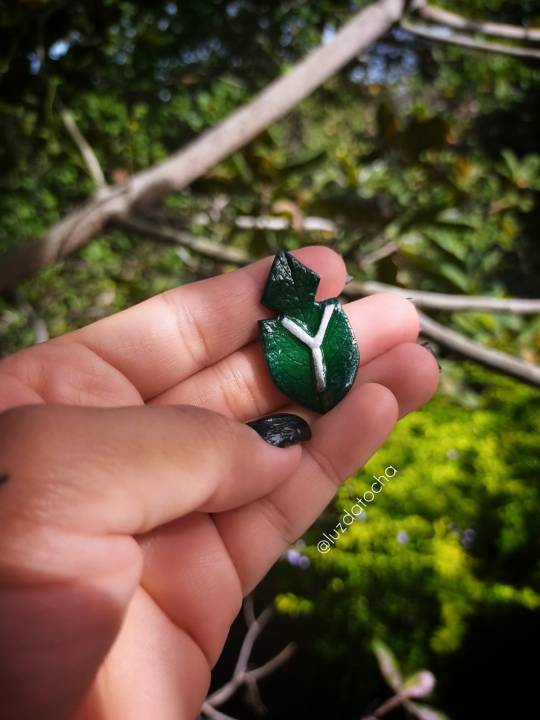
A palavra é “sabedoria”. O momento é de banimento. Os caminhos estão abertos.
Este símbolo corresponde a runa da mulher no oráculo “Runas das Bruxas” ou “Pedras das Bruxas”. Traz consigo a inteligência natural e perspicácia para agir ou preparar o caminho para coisas novas.
É favorável que para esses novos inícios a criatividade seja a nossa aliada. É necessário estudar para conhecer, conhecer para intuir. Abrir os braços para o que está por vir.
Geralmente antes de encerrar um ritual eu trago alguma questão para os meus oráculos e peço orientação através deles para a deidade que estou a cultuar. Durante a realização do ritual do Deipnon (um dos rituais mensais a Deusa Hekate) no mês de maio, eu usei as pedras das bruxas para aconselhamento sobre esse espaço, o Luz da Tocha. Apenas retirei do saquinho onde eu as guardo uma única pedra e saiu a runa da mulher.
Entendi, aceitei e comecei.
🗝️ Texto e fotografia por Michele Lima
🔥 @luzdatocha
1 note
·
View note
Text
Hellenic Polytheists and Functions
This is not for Reconstructionists.
Preface: I just came to this thinking after having visited Cuba for five days and talked to a number of folks who hold some form of religious role in Santeria. They were kind enough to teach me about their structure, the functions etc...
I feel that Hellenic Polytheism like most ‘pagan’ faiths lacks structure. This can be given to the fact that it’s an uncontinued practice that didn’t make it’s way through to the point in time where doxa and praxis was formally established. I also feel that this flexibility is also what attracts so many to the faith which is great, but sometimes I wonder if there could be more augmented to gain some more structure.
Looking at Santeria and the way it worked there in Cuba, it became abundantly clear through the many conversations that every level of clergy had some function that complimented another clergy persons function. One example is the Babalowo. The Babalawo is a priest of Orunmila (orisha of wisdom and divination) and doesn’t have a monopoly on divination, but is certainly the highest authority. People who want a sound consultation would be instructed to go see a Babalawo for this purpose.
Because in the world of today, we don’t have priests to do a lot of ritual functions for a community, each one of us is a ‘de facto’ priest(ess): we get up and do every part of every ritual on our own, we plan, celebrate, and execute our own festivals, and do the same for every other religious practice in our faith. I believe that because of the monotheistic nature of the western hemisphere, most Hellenic Polytheists have a preference to at least one deity, or some sort of devotion which wasn’t prevalent in the past, but I don’t think it’s a bad thing. The hellenes themselves changed practices and beliefs throughout time, I think it’d be ridiculous for us to think that they’d be happy to see that everything remained the same, on the contrary I think they’d find it odd.
I think It’d be awesome if for example: Priest(s/esses) of Hekate did purification rituals at a home during the Deipnon, and specialized in theurgy. A Priest(ess) of Apollon could focus on purification in regards to crimes or that which plagues someones conscience, and also on oracular work through meditations/trance. A priest of priestess of Hestia could bless a house when you first move into it, have them present when there’s a naming of a child at the hearth and so forth. Obviously a lot of deities have overlapping functions like divination (apollon, hekate, gaea, dione) children (hekate, artemis, rhea) healing (apollon, asklepius, Hygeia) etc.. Ideally all priests could fulfill most of each others functions to some extent, but to formulate a system where each has some level of authority would be useful. I feel this level of distinction wouldn’t separate people but actually give them an active role and it would help build a community. I as a priest of Hekate would be glad to purify someones home, and better yet to be referred to do it, and I’d be glad to refer to someone who I know is a priest(ess) of Hera to officiate my wedding or a priest(ess) of Artemis to take my childs offering when coming of age. I know this is made with the assumption that the population is big enough to have a community. Of course this is speaking on the people who’d want clergy roles, of course there are practitioners who simply worship these deities but don’t look to cultivate a priesthood. But as far as ideas go, what do you think?
#hellenic polytheism#hellenismos#hellenism#hellenic polytheist#hellenic pagan#hellenic paganism#greek gods
51 notes
·
View notes